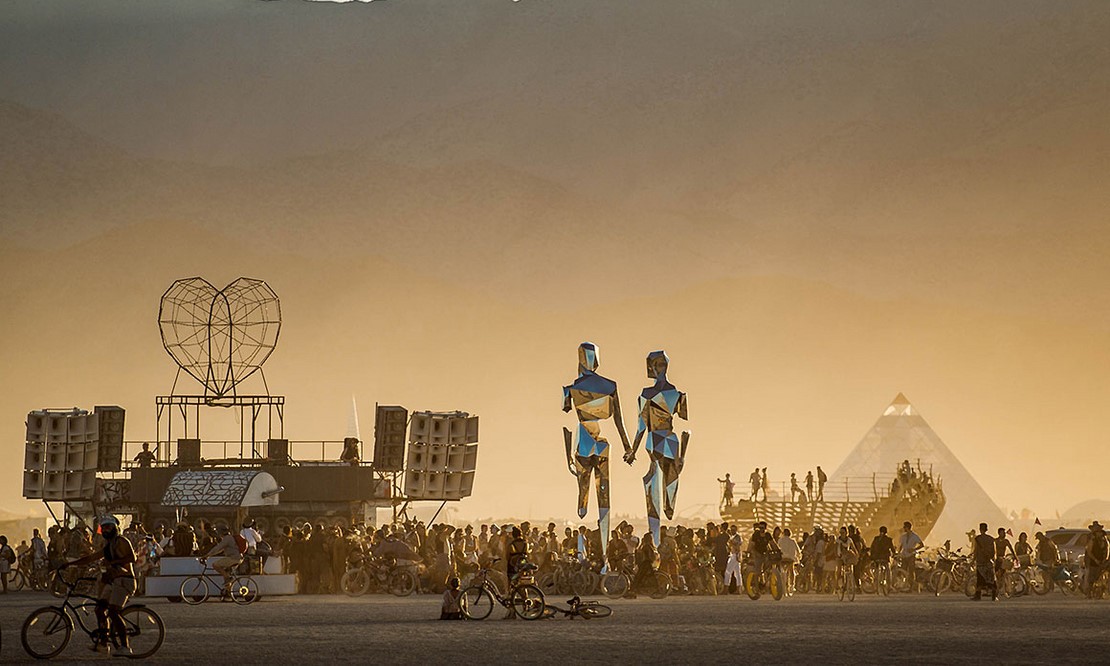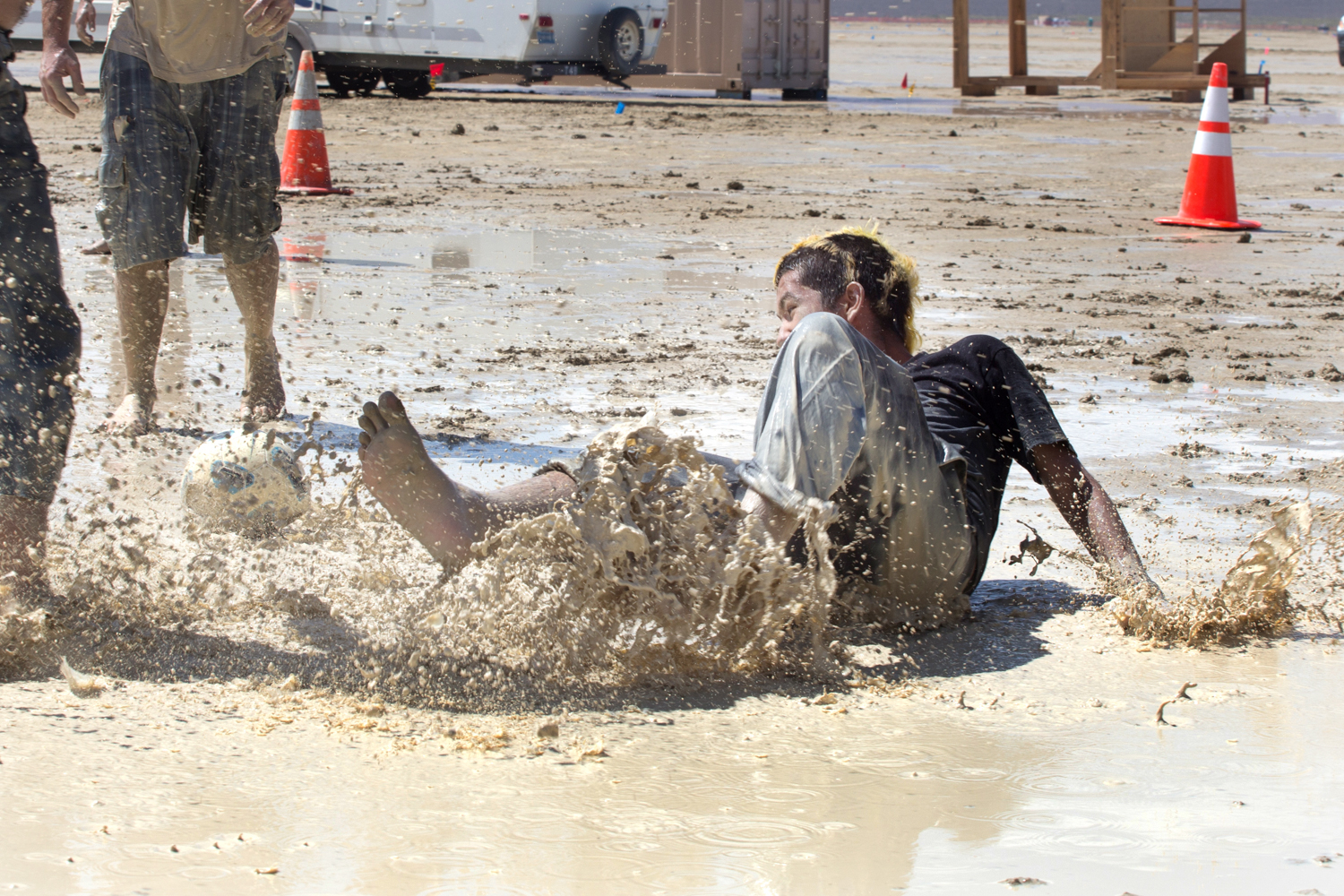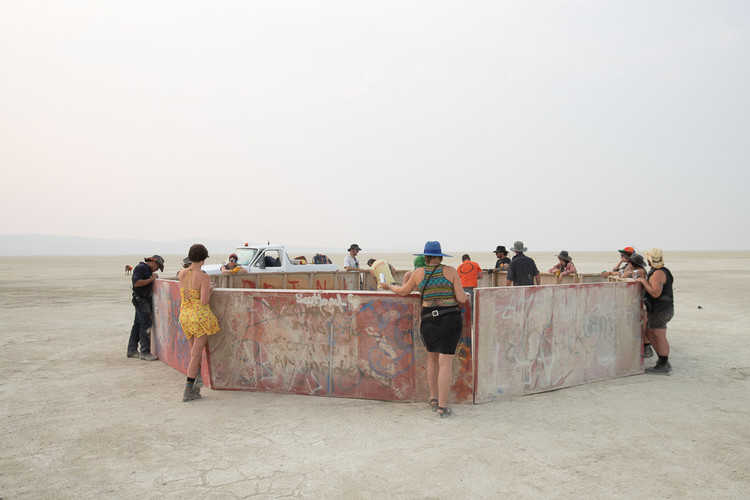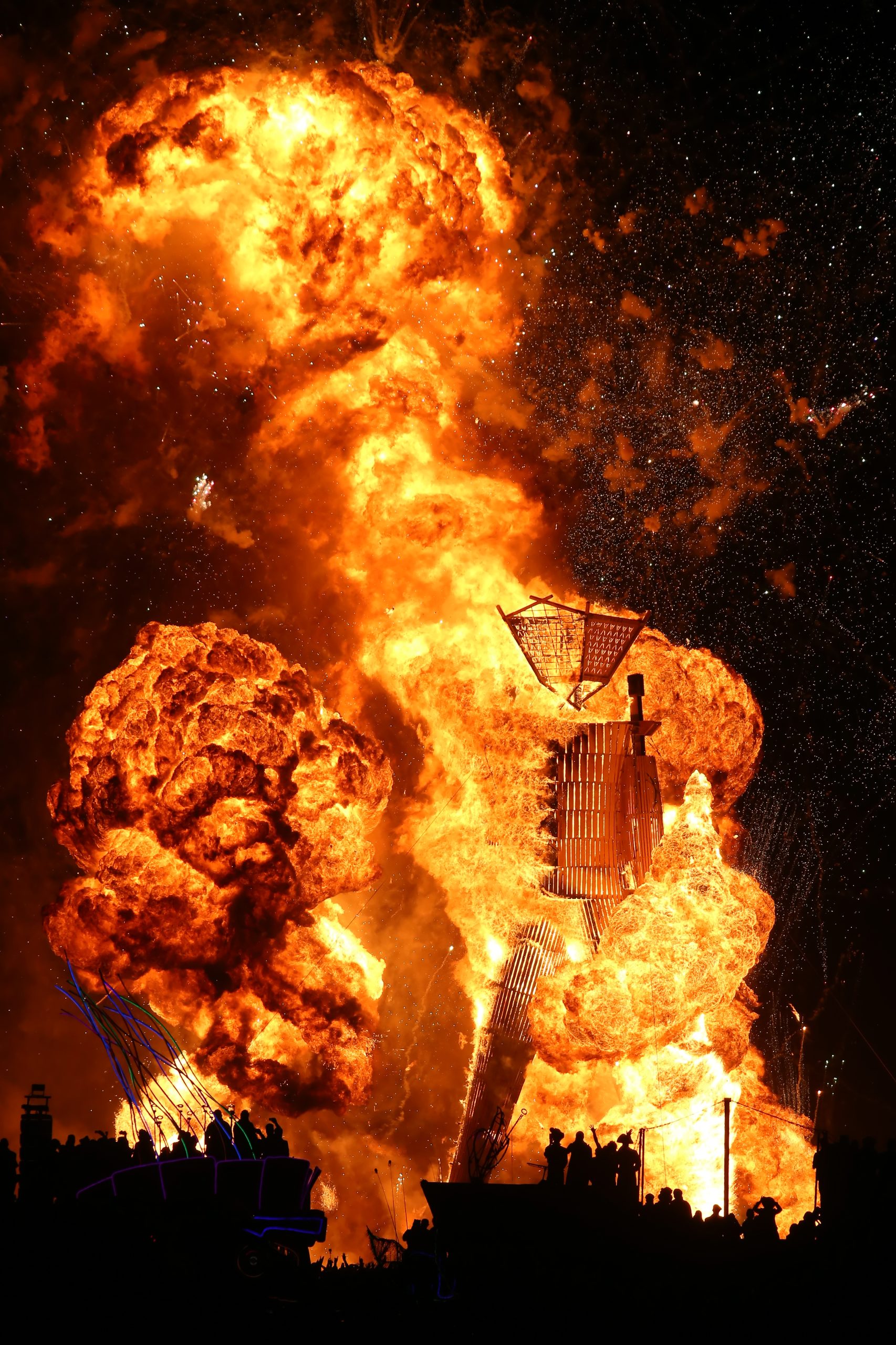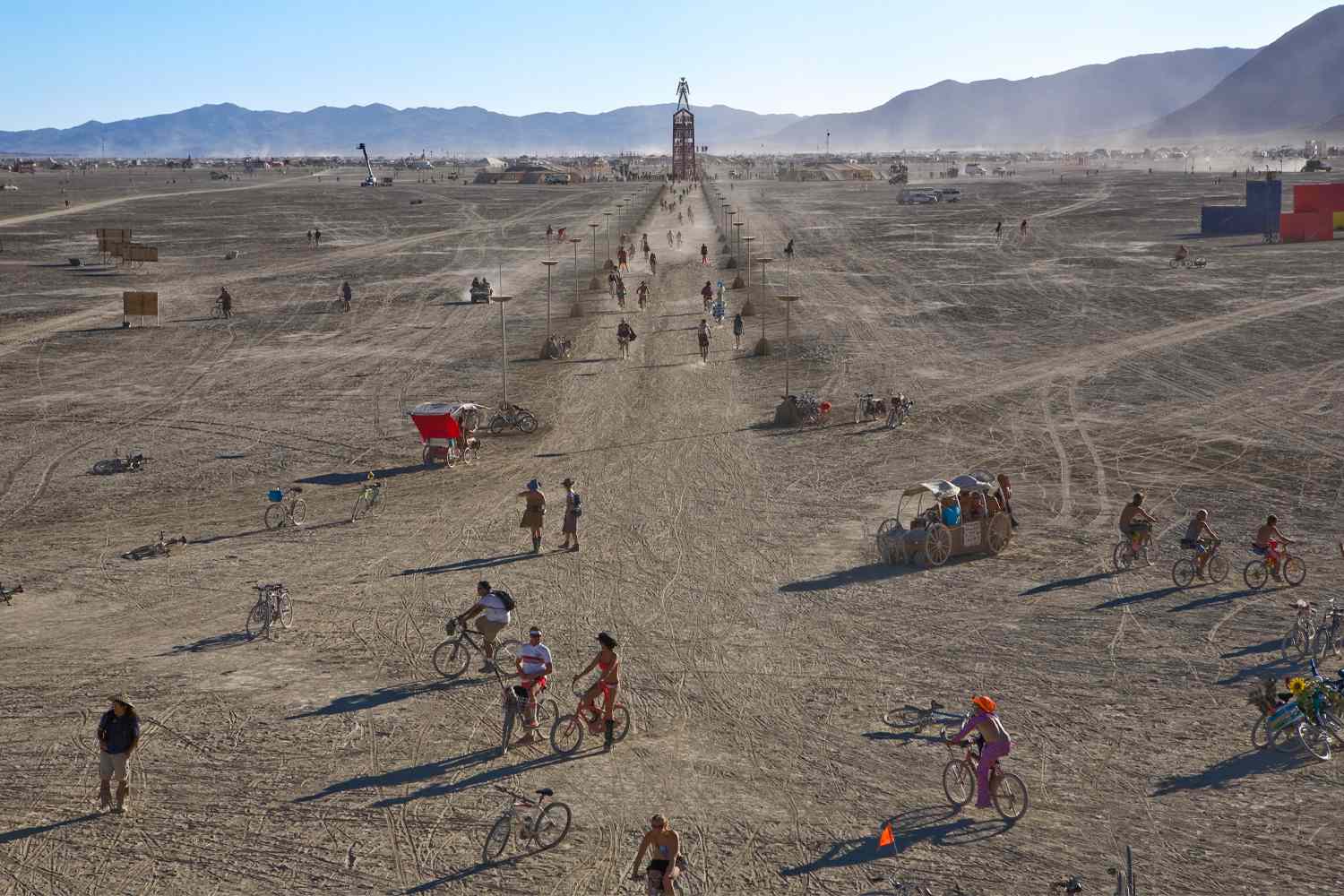The event is known around the world: Burning Man. After a two year hiatus due to the COVID-19 pandemic, Burning Man has returned to the Black Rock Desert in northern Nevada for its annual week-long event. Running from August 28th to September 4th, 2023, this year’s Burning Man has seen the largest crowds ever, with over 80,000 attendees converging on the playa to experience the iconic festival.
The highlight of Burning Man is always the burning of the giant effigy known as “The Man” on Saturday night before the event ends on Sunday. This year’s man stood at 60 feet tall and was burned in spectacular fashion, surrounded by throngs of cheering burners. Other popular events this year included the art installations spread across the open desert landscape, eclectic “theme camps” where burners camp and host events, and the massive dance music stages that pulse through the nights.
And then nature interrupted the utopian spectacle: After a week of desert heat, Sunday—the final day of Burning Man 2023—brought a sudden, torrential rain. The deluge turned the dusty playa into a mud pit, halting the exodus out of Black Rock City as vehicles became hopelessly mired. Ironically, attendees who had come seeking transformation in the desert found themselves stuck, unable to leave, forced to wait out the storm.
Burning Man first began in 1986 on Baker Beach in San Francisco, when Larry Harvey and Jerry James built and burned an 8-foot-tall wooden figure. It quickly outgrew its initial venue and by 1990 had found its now permanent home in the Black Rock Desert. The nascent festival embraced radical self-expression and self-reliance, with no corporate sponsorship or vending allowed. Over its 30+ year history, Burning Man has evolved into a cultural phenomenon that many attendees describe as a life-changing experience. The return of Burning Man to Nevada’s Black Rock Desert this past week marks the continuation of a radical social experiment begun over 30 years ago. Born out of the counterculture movement in San Francisco in the 1980s, Burning Man is fundamentally an attempt to construct a temporary utopian society guided by a set of alternative principles.
Central to the ethos of Burning Man are the 10 Principles, originally crafted by Larry Harvey in 2004, that still guide the event today:
- Gifting – money and bartering are discouraged, instead attendees gift provisions, art, and experiences
- Radical Inclusion – anyone is welcome to attend and participate
- Decommodification – the social environment is free from corporate influence
- Radical Self-reliance – individuals supply their own basic needs for survival
- Radical Self-expression – everyone is encouraged to freely express themselves
- Communal Effort – collaboration supersedes competition
- Civic Responsibility – individuals are accountable for their own conduct
- Leaving No Trace – festival-goers are expected to leave no trash or non-biodegradable trace
- Participation – everyone is invited to actively co-create their experiences
- Immediacy – living in the moment is valued over distraction
At its core, Burning Man is a reaction against many of the norms, power structures, and commodification of modern capitalist society. The festival rejects corporate influence, advertising, and transactions in favor of gift-giving, communal effort, and participation. Attendees are encouraged to express discomfort with the ‘default world’ by openly criticizing social constraints and embracing practices like nudity, costumed anonymity, and psychedelic drug use. The 10 Principles of Burning Man outline a new philosophical approach to community: These principles advocate for a society where citizens take personal responsibility for their beliefs, actions, and environment separate from hierarchical government and corporate intervention.
This temporary autonomous zone allows participants to imagine and enact alternatives to excessive consumerism, environmental destruction, and social repression in the mainstream culture. The ritual burning of the Man emblemizes a cleansing transformation through which attendees can experience personal liberation and creativity, and deeper human connection. The rain actually enforces this transformation.
Burning Man represents a modern manifestation of the utopian social movements that have arisen periodically in history to challenge societal norms. Through its growth over decades, Burning Man demonstrates the enduring desire for human connection, creativity, and community that counterbalances the isolation, constraints, and commodification characteristic of our culture. The fleeting existence of Black Rock City reminds us that the gulf between utopian dreams and daily reality persists, and creates a sense of alienation for many people.
After over 30 years in the Nevada desert, Burning Man continues to spread its message worldwide through Regional Burns and the global burner community. This year’s return to Black Rock City demonstrated that the spirit of Burning Man is alive and well, and still touching lives through creativity, participation, and self-expression.
